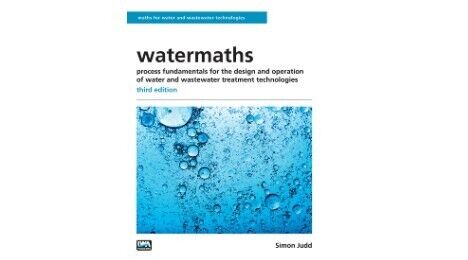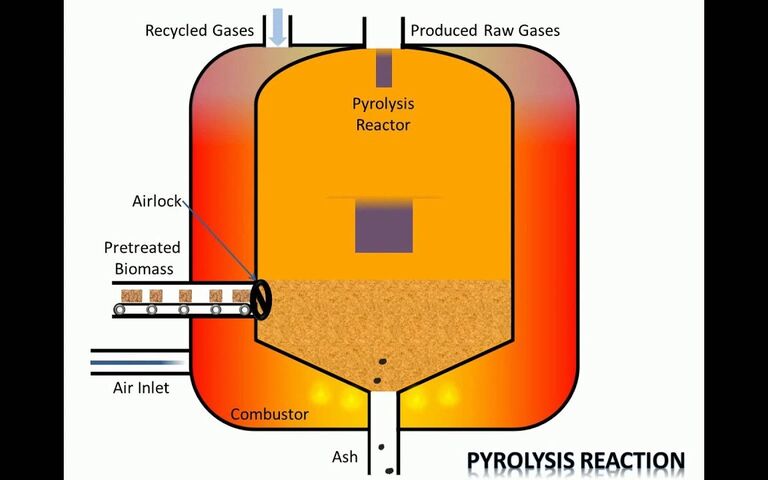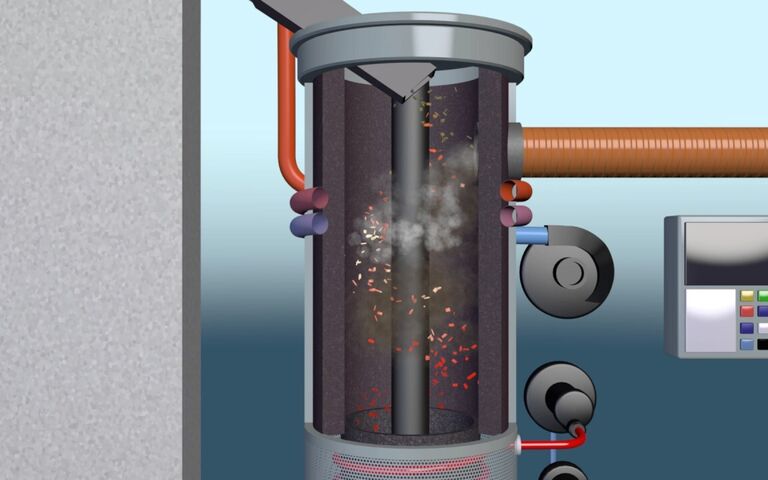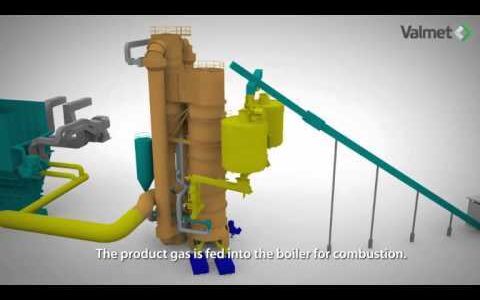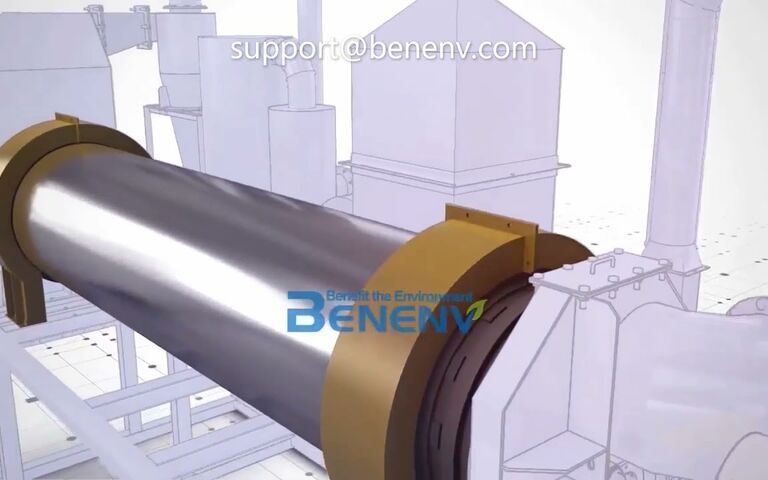Hydrothermal carbonisation – ten research papers

Hydrothermal carbonisation HTC – what about the P?
Our list is presented in reverse chronological order without preference. It was compiled by Simon Judd in August 2020, and may be updated in future as new papers are published.
Hydrothermal carbonisation (HTC) has come a long way in a very short space of time. The first significant review of the subject was only published 10 years ago, and it’s difficult to track down any papers in peer-reviewed journals on the subject prior to the mid noughties.
There’s since been an explosion of publications: there are currently close to 1000 featuring the term 'hydrothermal carbonisation' in the title, according to the SCOPUS database. And such is the focus on resource recovery, there is a reasonable selection of papers featuring either the fate of phosphorus (P) in the HTC process or its recovery from the product biochar. The P-related HTC studies dating back to the start of 2017 include:
- its reclamation as either struvite or hydroxyapatite
- impacts of residence time, temperature and heating rate on biochar properties and P content
- organic vs inorganic P speciation, formation mechanisms and phase distribution
- organic acids for leaching P from biochars
- biochar soil amendment properties from physicochemical characterisation, and
- impacts of phosphoric acid addition on toxic metal bioavailability in the biochar.
Given that the biochar has a host of other properties besides its P content, there’s clearly a lot more research potential in this fascinating subject area.
Please note, these papers represent a selection of those available and are not presented in any preferential order.
- Selected research papers:
Abstract
'Phosphorus (P) recovery from sewage sludge is one of the promising substitutes to the phosphate ores to alleviate the shortage of P supply in the future. In this study, how hydrothermal carbonization (HTC) temperature functioned in the migration and transformation of P from sewage sludge during HTC process was clarified. The enhancement effect of Ca-based additive on the transformation of P to hydroxyapatite via HTC was systematically studied. Additionally, leaching characteristics of P in the hydrochars with Ca-based additive were analyzed to assess their P-bioavailability. Results indicated that favoring by increased pH in the process water, HTC temperature played a significant role in the migration and transformation of P during HTC. Therefore, higher HTC temperature was beneficial for P enrichment and transformation to apatite phosphorus in the hydrochars.
'Both alkaline environment and existence of sufficient calcium ions were essential for enhanced formation of apatite phosphorus during HTC. Adding CaO could stimulate almost complete transformation of non-apatite inorganic phosphorus to apatite phosphorus such as hydroxyapatite, causing a maximum increase of apatite phosphorus by 252%. Concurrently, P-bioavailability by 2% (w/w) formic acid extraction of the hydrochars increased by 233% at CaO = 4%. These findings were confirmed by XRD analyses. Ca-associated apatite phosphorus such as Ca5(PO4)3OH and Ca2P2O7 ∙ 2H2O, was detected in the hydrochars. With the assistance of thermochemical calculation, transformation pathways of P after CaO addition have been proposed, which coincided with our experimental results well. The stable P-containing minerals of hydroxyapatite (Ca5(PO4)3OH) was calculated at equilibrium state.'
© 2020 Elsevier B.V.Full Reference
Zheng, X., Ye, Y., Jiang, Z., Ying, Z., Ji, S., Chen, W., Wang, B., & Dou, B. (2020). Enhanced transformation of phosphorus (P) in sewage sludge to hydroxyapatite via hydrothermal carbonization and calcium-based additive. Science of the Total Environment, 738, 139786.
Abstract
'Conventional activated sludge systems, still widely used to treat wastewater, produce large amounts of solid waste that is commonly landfilled or incinerated. This study addresses the potential use of Hydrothermal Carbonization (HTC) to valorize sewage sludge residues examining the properties of hydrochars depending on HTC process conditions and sewage sludge withdrawal point. With increasing HTC severity (process residence time and temperature), solid yield, total Chemical Oxygen Demand (COD) and solid pH decrease while ash content increases. Hydrochars produced from primary (thickened) and secondary (digested and dewatered) sludge show peculiar distinct properties. Hydrochars produced from thickened sludge show good fuel properties in terms of Higher Heating Value (HHV) and reduced ash content. However, relatively high volatile matter and O:C and H:C ratios result in thermal reactivity significantly higher than typical coals. Both series of carbonized secondary sludges show neutral pH, low COD, enhanced phosphorous content and low heavy metals concentration: as a whole, they show properties compatible with their use as soil amendments.'
© 2020 by the authorsFull Reference
Merzari, F., Goldfarb, J., Andreottola, G., Mimmo, T., Volpe, M., & Fiori, L. (2020). Hydrothermal carbonization as a strategy for sewage sludge management: Influence of process withdrawal point on hydrochar properties. Energies, 13(11), 2890.
Abstract
'This study investigated the distribution and transformation behaviors of heavy metals (HMs) and phosphorus (P) during hydrothermal carbonization (HTC) of sewage sludge. In addition to a large reduction in sludge volume, HTC significantly decreased the exchangeable fraction of HMs (Zn, Cu, Cr, Ni, and Mn) and increased their residual fraction, which resulted in immobilization of HMs accumulated in hydrochar. The ecological toxicity of HMs was greatly reduced, and all HMs exhibited their lowest risk levels after HTC at 220 °C for 1 h in 2% H2SO4 solution. Most of the P (~ 97%) in the input sludge remained in the hydrochar after HTC. HTC facilitated transformation of organic P to inorganic P and promoted conversion of apatite P to non-apatite inorganic P under acidic conditions. The feasibility of recovering P from sludge by HTC was verified by an acid extraction experiment utilizing hydrochar, which recovered more than 90% P.'
© 2020, Springer-Verlag GmbH Germany, part of Springer Nature.Full Reference
Wang, H., Yang, Z., Li, X., & Liu, Y. (2020). Distribution and transformation behaviors of heavy metals and phosphorus during hydrothermal carbonization of sewage sludge. Environmental Science and Pollution Research, 27(14), 17109−17122.
Abstract
'This work evaluates the potential of hydrothermal carbonization (HTC) to valorize the digestate derived from the anaerobic digestion of sewage sludge into useful materials for P and energy recovery. The hydrothermal treatment of digestate at 180–240 °C did not lead to high-rank hydrochars. On the other hand, inorganic P concentration did not change with the temperature, while as the carbonization temperature increased, the organic P retention yield in hydrochar became lower, increasing the total P in the process water obtained at the highest temperature, up to 25.3%. P recovery from acid leaching of the hydrochar obtained at 180 °C, via precipitation with CaO at pH up to 9, led to a brown solid precipitate with total P content close to 42 mg g−1, in the range of low grade phosphorus ores. Moreover, acid leaching reduced by 50% the ash content, yielding lignite-like upgraded hydrochars with higher heating values in the range of 20.5–23.1 MJ kg−1, fairly interesting as solid fuels. Anaerobic digestion of the process water enabled additional energy recovery in form of biogas (325 and 279 mL CH4 g−1 VS -at standard temperature and pressure; STP- from the process water resulting at 180 and 210 °C, respectively).'
© 2020 Elsevier LtdFull Reference
Marin-Batista, J. D., Mohedano, A. F., Rodríguez, J. J., & de la Rubia, M. A. (2020). Energy and phosphorous recovery through hydrothermal carbonization of digested sewage sludge. Waste Management, 105, 566−574.
Abstract
'Hydrothermal carbonization (HTC) of sewage sludge reduces the waste volume and can be source of energy and valuable products. Furthermore, HTC offers several advantages over conventional dry-thermal pre-treatments, as no prior drying is requested, and the high quality of the char produced promotes applications as energy production and storage, wastewater remediation, and soil amendment. Relationships between char yields, physicochemical properties and process parameters are here analysed, with the aim to provide insight into the choice of the process severity required to fit the desired application.
'Moreover, presence and fate of heavy metals and organic contaminants are discussed. The highest reaction temperature is the main parameter affecting the physicochemical characteristics of the char produced, while the heating rate governs the heat mass transfer and the rate of intermediates formation. Depolymerization of the biomass results in a reduction of the oxygen to carbon ratio and, therefore, in augmented high heating values, further increased by deposition of 5-(hydroxymethyl)furfural. Recirculation of process water may enhance dehydration reactions and the deposition of degraded polymers, increasing dewaterability and yield, but field trials are recommended to assess the feasibility of this option. An overuse of chars for energy generation purposes would be deleterious for the environmental life cycle. Further research is encouraged to assess the pollutants abatement and their degradation pathways when incorporated in the carbonaceous product, to promote the application of hydrochars as soil amendment, as well as for environmental remediation purposes.'
© 2019 Elsevier LtdFull Reference
Tasca, A. L., Puccini, M., Gori, R., Corsi, I., Galletti, A. M. R., & Vitolo, S. (2019). Hydrothermal carbonization of sewage sludge: A critical analysis of process severity, hydrochar properties and environmental implications. Waste Management, 93, 1-13.
Abstract
'Hydrothermal carbonization (HTC) showed promising performance as an alternative sewage sludge treatment already, as the draining ability of sludge is improved while fuel properties of the yielded hydrochar are superior to native sludge. On the other hand, the sole combustion of sewage sludge and its corresponding hydrochars are a waste in terms of nutrients like phosphorus and nitrogen. Therefore, a combination of HTC and a nutrient recycling strategy via the precipitation of phosphate and nitrogen as struvite (magnesium ammonium phosphate) are introduced in this research. We used an anaerobically digested sewage sludge with high loads of aluminium- and ironsalts. Phosphate release cannot be reached by HTC alone, as phosphate is heavily bound in stable iron- and aluminium-associations. An acid leaching step removes it from the hydrochar (58.5–94.8% P), while the process liquid arising from HTC is used as ammonium source (107–291 mmol l−1 NH4 ). After adjusting pH and addition of a magnesium source, struvite is rapidly precipitated in high purity. Nitric acid is used as a “catalyst” in HTC to improve the degree of carbonization on one hand but also improve the phosphate recovery on the other hand by increasing the amount of ammonium available for struvite formation in the process liquid. The highest total recovery rate of phosphate from sludge was 82.5 wt.% and therefore this approach showed to be a serious alternative to other P-recovery techniques.'
© 2019 Elsevier LtdFull Reference
Becker, G. C., Wüst, D., Köhler, H., Lautenbach, A., & Kruse, A. (2019). Novel approach of phosphate-reclamation as struvite from sewage sludge by utilising hydrothermal carbonization. Journal of Environmental Management, 238, 119−125.
Abstract
'As a treatment method of sewage sludge, the hydrothermal carbonization (HTC) process was adopted in this work. HTC has a great advantage considering the economic efficiency of its process operation due to its reduced energy consumption and production of solid fuel upgraded through the increased fixed carbon and heating value. The ash of sewage sludge, however, contains up to 52.55% phosphate, which degrades the efficiency of the thermochemical conversion process such as pyrolysis, combustion, and gasification by causing slagging. In this study, three kinds of organic acids, i.e., oxalic, tartaric, and citric acid, were selected to eliminate phosphorus from hydrochars produced through the HTC of sewage sludge. The efficiency of the phosphorus removal and the properties of the corresponding HTC hydrochars were analyzed by adding 20 mmoles of organic acids per 1 g of phosphorus in the HTC sample. In addition, the phosphorus reduction effect and the applicability to an upgrading process were verified. Oxalic acid was selected as the most appropriate organic acid considering the economic efficiency of its process operation. Furthermore, the optimal conditions were selected by analyzing the efficiency of the phosphorus elimination and the characteristic property of the HTC hydrochars with the weight fraction of oxalic acid.'
© 2019 by the authorFull Reference
Song, E., Park, S., & Kim, H. (2019). Upgrading hydrothermal carbonization (HTC) hydrochar from sewage sludge. Energies, 12(12).
Abstract
'Anaerobic granular sludge (AGS) has been applied for most highly efficacy anaerobic digestion systems like upflow anaerobic sludge blanket and expanded granular sludge bed reactors. As a by-product from these systems, AGS is prospected as a promising resource for energy and nutrients recovery from wastewater. In this study, hydrothermal carbonization (HTC) of AGS was investigated at different temperatures (160–240 °C) regarding the distributions of C, N and P in the hydrothermal products to maximize the utilization efficiency of AGS. Elemental composition and fuel characteristics of the hydrochar were evaluated. Results indicated that the percentages of C in hydrochar increased from 43.79% to 49.81% with the increase in HTC temperature, while N showed an opposite trend, decreasing from 9.58% to 5.49%.
'The higher heating value of hydrochar increased up to a maximum of 24 MJ/kg at 240 °C from 20 MJ/kg at 160 °C. However, the hydrochar yield decreased remarkably from 62% to 32%. As a result, the highest net energy output was about 6.86 MJ/kg achieved at 160 °C. Results from the van Krevelen diagram suggested that dehydration and decarboxylation reactions occurred during the HTC of AGS. In addition, the thermogravimetric analysis implied that the combustion of the produced hydrochar could be completed in two phases rather than the one phase as the raw AGS. With regard to other resources utilization, HTC was proved to be effective for AGS to immobilize and recycle phosphorus. The increase in HTC temperature exerted a limited effect on P distribution, resulting in less than 5% being released into the liquid at all tested HTC temperatures. Most of P were immobilized into the produced hydrochar where the bioavailable P fractions > 80%.'
© 2018 Elsevier LtdFull Reference
Yu, Y., Lei, Z., Yang, X., Yang, X., Huang, W., Shimizu, K., & Zhang, Z. (2018). Hydrothermal carbonization of anaerobic granular sludge: Effect of process temperature on nutrients availability and energy gain from produced hydrochar. Applied Energy, 229, 88-95.
Abstract
'The effect of phosphoric acid addition to the feed-water on the speciation and transformation behaviour of potentially toxic elements (PTEs) in the hydrothermal carbonisation (HTC) of sewage sludge was explored. Over 70% of each of the PTEs (As, Cd, Cr, Cu, Mn, Ni, Pb and Zn) was in the directly bioavailable and potentially bioavailable fraction in the raw sludge, and especially Cu and Zn at 97.5 and 98.6%, respectively. Through the HTC process the directly bioavailable and potentially bioavailable fractions of PTEs in the sludge hydrochar clearly decreased, and the residual fraction in the hydrochar showed an observable increase. Further stabilisation of PTEs in hydrochar occurred during HTC with the addition of phosphoric acid solution to the feed-water.
'As the concentration of phosphoric acid in the feed-water increased the percentages of the residual fraction of Cd, Cr, Ni, Pb and Zn in hydrochars each exceeded 80%, but different PTEs behaved differently with increasing phosphate molar ratio in the feed-water. When the molar ratio of phosphate was 15%, the percentages of the residual fractions of Cd, Mn and Zn reached their maximum values in accordance with the changing trend in aromaticity of the hydrochar. Moreover, a large number of phosphate mineral crystals effectively occluded the PTEs in hydrochar. In conclusion, the addition of phosphoric acid to the feed-water during HTC further deactivated PTEs leading to a substantial decline in the potential environmental risk associated with the land application of the sewage sludge.'
© 2018 Elsevier LtdFull Reference
Zhang, Y., Deng, Q., Wang, M., Zhang, J., Man, Y. B., Shan, S., Wu, S., Liang, P., Cao, Y., Sog, C., Luo, L., Christie, P., & Wong, M. H. (2018). Role of phosphoric acid in the bioavailability of potentially toxic elements in hydrochars produced by hydrothermal carbonisation of sewage sludge. Waste Management, 79, 232-239.
Abstract
'Anaerobic thermochemical carbonization can be used to treat sewage sludge and facilitate its reuse. The aim of this study was to compare and evaluate chars produced by pyrolysis and hydrothermal carbonization (HTC) of sewage sludge, so-called sewchars, under varying process conditions in terms of their soil amelioration potential. Three different sewage sludges, two pyrolysis and four HTC sewchars were evaluated with respect to their stability in soil, perspective for nutrient recycling and potential use as soil amendments. The sewchars were produced at different temperatures (pyrolytic low temperature conversion LTC 400 °C; PYREG pyrolysis 700 °C; HTC 180–200 °C) and for varying treatment times (LTC and PYREG 1 h; HTC: 4–8 h). O/C and H/C ratios of about 0.7 and 1.8 respectively, indicated that HTC sewchars will tend to be less recalcitrant in soils than pyrolysis sewchars.
'The duration and temperature of HTC correlated positively with the chars’ contents of adsorbed labile carbon and nitrogen compounds. However, HTC failed to increase the chars’ resin-extractable phosphorus contents. The cation exchange capacity of sewage sludge was reduced by HTC but stayed on a higher level than after pyrolysis. With increasing treatment temperature, the pH, ash (content) as well as macro- and micronutrient contents increased. Pyrolysis sewchars also accumulated heavy metals; however their contents were lower than those reported previously. An enrichment of heavy metals was also observed for the HTC sewchars, albeit to a much lesser extent.'
© 2017 Elsevier B.V.Full Reference
Breulmann, M., van Afferden, M., Müller, R. A., Schulz, E., & Fühner, C. (2017). Process conditions of pyrolysis and hydrothermal carbonization affect the potential of sewage sludge for soil carbon sequestration and amelioration. Journal of Analytical and Applied Pyrolysis, 124, 256−265.

Professor Simon Judd has over 30 years’ post-doctorate experience in all aspects of water and wastewater treatment technology, both in academic and industrial R&D. He has (co-)authored six book titles and over 200 peer-reviewed publications in water and wastewater treatment.
In his capacity as director of Judd Water & Wastewater Consultants, Simon is co-owner of SludgeProcessing.com, as well as of our sister website The MBR Site. He was Professor in Membrane Technology at the Cranfield Water Science Institute at Cranfield University in the UK from 1992 until 2021. Simon was also a Research Chair at Qatar University in the Middle East for six years until September 2018.


